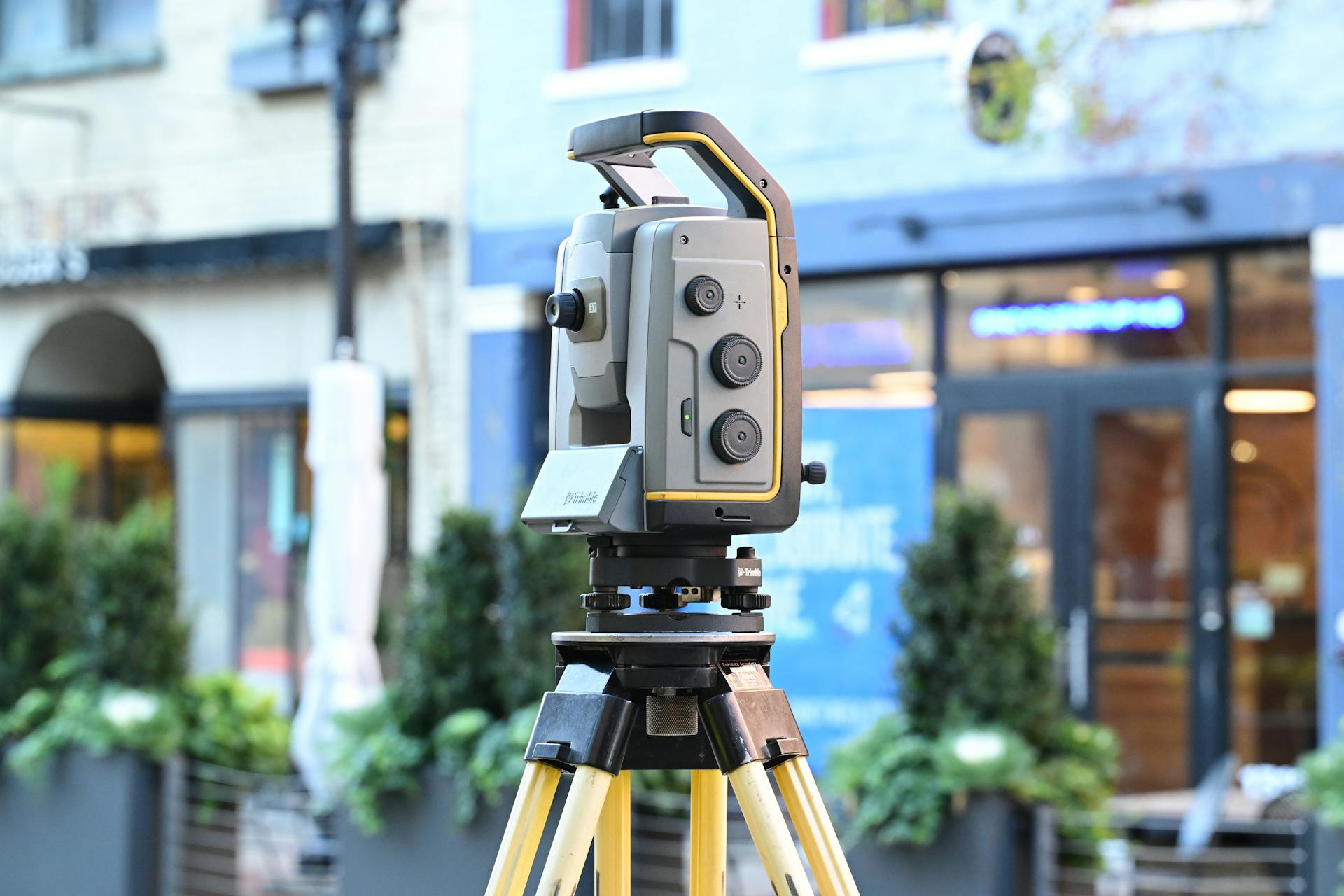
OHIP health insurance is a vital part of living in Ontario, Canada. It's a government-funded program that provides essential medical coverage to residents.
To be eligible for OHIP, you must be a resident of Ontario, which means you must have a permanent home in the province and be present in the province for at least 153 days in a calendar year.
You'll receive a health card, also known as a provincial health insurance card, after you register with the Ontario Health Insurance Program. This card is your proof of coverage and must be presented whenever you receive medical services.
If you're a visitor to Ontario, you may be eligible for OHIP coverage if you're a Canadian resident who's temporarily living outside the province, or if you're a non-Canadian resident who's visiting Ontario for a short period.
Take a look at this: Dental Insurance Ontario
What's Covered?
Here's what's covered under OHIP. You can visit a doctor anytime you want, subject to the doctor's consent, and the services will be billed through OHIP to the government.
Emergency and preventive care is available to every Ontario resident with their primary and permanent home in Ontario, free of charge. This includes ambulance services and travel for medical care if you live in Northern Ontario.
You can also get coverage for doctors' visits, visits and stays in the hospital, and eligible dental surgeries performed in a hospital. Abortions by medicine or surgery, eligible optometry services, and podiatry services are also covered.
Here's a list of some of the services covered by OHIP:
- Doctors visits
- Visits and stays in the hospital
- Abortions by medicine or surgery
- Eligible dental surgeries performed in a hospital
- Eligible optometry services
- Podiatry services
- Ambulance services
- Travel for medical care if you live in Northern Ontario
Eligibility and Funding
To be eligible for coverage under OHIP, you must normally be a Canadian citizen or permanent resident, or have a work permit in Ontario. You must also have a permanent and principal home in Ontario and be physically present in the province for 153 days in any 12-month period.
The Ontario Health Premium (OHP) is a component of Ontario's Personal Income Tax system, and it's based on your taxable income for a taxation year. For example, if you have a taxable income of $21,000, you'll pay $60 per year in OHP, while a taxable income of $22,000 will result in a premium of $120.
A unique perspective: Ontario Health Insurance Plan
Here are the key eligibility requirements:
- You must be physically residing in Ontario province for 153 days in any 12-month period
- You must be physically residing in Ontario for at least 153 days of the first 183 days immediately after you began living in the province
- You must register Ontario as your primary residence
The OHP premium increases at a decreasing rate for taxable incomes up to $200,600, at which point the maximum premium of $900 is reached.
Who Qualifies for the?
To qualify for OHIP, you must meet certain requirements. You must be physically residing in Ontario for at least 153 days in any 12-month period, and you must register Ontario as your primary residence.
You can qualify for OHIP if you're a Canadian citizen, Indigenous person, or permanent resident. You can also qualify if you have a valid work permit in Ontario with a full-time job for at least six months. This also covers your spouse and dependents.
If you're a convention refugee or other protected person, you may also be eligible. Additionally, if you have a Temporary Resident Permit in certain cases, you may qualify.
Here are the specific requirements:
- You must be physically residing in Ontario for at least 153 days in any 12-month period
- You must register Ontario as your primary residence
- You must meet at least one of the following additional requirements:
- You are a Canadian citizen
- You are an Indigenous person
- You are a permanent resident
- You have a valid work permit in Ontario with a full-time job for at least six months
- You are in Ontario on a valid work permit under the federal Live-in Caregiver Program
- You are a convention refugee or other protected person
- You have a Temporary Resident Permit in certain cases
It's worth noting that if you're a Canadian citizen or permanent resident returning to Canada from another country, you won't be covered by OHIP until you've been resident in Ontario for three months.
Expand your knowledge: Kansas Dental Insurance
Funding
Ontario receives transfer payments from the Government of Canada to partially fund health care.
These payments are supplemented by general provincial tax revenues and premiums paid by employers and individuals. Employers are charged a payroll health care tax, with an exemption for small businesses.
Residents of the province pay a health premium as part of their income taxes, introduced in 2004. This premium is based on taxable income for a taxation year.
For example, an Ontario resident with taxable income of $21,000 pays $60 per year. The premium doubles to $120 with a taxable income of $22,000.
As taxable income increases, the premium increases at a decreasing rate. With a taxable income of $23,000, the premium is $180, and with $24,000, it's $240.
The maximum premium of $900 is reached at a taxable income of $200,600.
Curious to learn more? Check out: Is Health Insurance Premium Pre Tax
Applying for OHIP
To apply for OHIP, you'll need to visit a ServiceOntario centre in person. Choose a location close to your home for convenience. You can find ServiceOntario locations, hours, and contact information on the following page.
Bring the required documents with you to the ServiceOntario centre. You'll need a completed 'Registration for Ontario Health Insurance Coverage' form, three original qualifying identification documents, an original document proving your OHIP-eligible immigration status, a proof of your residency in Ontario, and an original document that proves your identity.
You can't apply for OHIP online or by mail. In-person visits are mandatory. If you're not qualified for OHIP, you can send a letter with supporting documents to the Health Services Appeal and Review Board within 15 days of receiving the written decision.
If you're a non-resident or visitor to Ontario from another Canadian province or territory, or from outside Canada, you don't qualify for OHIP and can't use the Ontario Health Insurance Program services and benefits.
OHIP Card and Benefits
To get an OHIP card, you need to apply for it at your nearest ServiceOntario centre in person and provide required information.
Once your application is approved, you'll receive a unique Ontario health card, which is your proof of being covered by the Ontario Health Insurance Program.
This card is essential to show every time you visit a doctor, have a medical test, or arrive at the emergency department.
You'll need to carry your OHIP card with you at all times to access healthcare services in Ontario.
Card Protection
Protecting your OHIP card is crucial to safeguarding your private credentials and personal health information. You should only share your health card number with healthcare professionals who have the right to access it.
Doctors, nurse practitioners, hospitals, chiropractors, and optometrists are among the professionals who can use your OHIP card for medical purposes.
If someone gets access to your OHIP card, they may use it to access your personal health information or commit OHIP fraud.
Here are some healthcare professionals who can use your OHIP card:
- Doctors
- Nurse practitioners
- Hospitals
- Chiropractors
- Optometrists
Ontario Health Insurance Program Card
As a resident in Ontario, you'll need to apply for an OHIP card to access healthcare services in the province. You don't qualify for the card automatically, so it's essential to apply for it as soon as possible after arriving in Canada.
To get an OHIP card, you'll need to apply in person at your nearest ServiceOntario centre and provide the necessary information. Once your application is approved, you'll receive your unique Ontario health card, which serves as proof of your coverage under the Ontario Health Insurance Program.
Your OHIP card is your passport to healthcare services in Ontario, and you'll need to show it every time you visit a doctor, have a medical test, or arrive at the emergency department.
To protect your OHIP card, it's crucial to keep it safe and secure. If someone gets access to your card, they may be able to access your private credentials and personal health information, or even commit OHIP fraud.
See what others are reading: Do I Need Us Health Insurance If I Live Abroad
You should only share your health card number with healthcare professionals who have the necessary rights to access your information. These include:
- Doctors
- Nurse practitioners
- Hospitals
- Chiropractors
- Optometrists
Remember, your OHIP card is a vital document that proves your coverage under the Ontario Health Insurance Program. Make sure to keep it with you at all times to ensure you can access the healthcare services you need.
Frequently Asked Questions
Does OHIP cover in the USA?
OHIP may cover out-of-country health services in the USA, but only for emergency services or those previously approved
Is OHIP valid outside Canada?
OHIP is valid outside Canada for up to 212 days in a 12-month period, but you may need to apply for continuous coverage if you'll be away longer
What is OHIP Oracle?
Oracle Hospitality Integration Platform (OHIP) is a cloud-based platform that enables seamless integration of business applications. It provides a Streaming API to consume events from OPERA Cloud and other Hospitality Cloud applications
Sources
- https://en.wikipedia.org/wiki/Ontario_Health_Insurance_Plan
- https://liplanarkrenfrew.ca/newcomers/getting-settled/how-to-get-your-ontario-health-insurance-program-ohip-card
- https://loanscanada.ca/government-benefits/what-is-the-ontario-health-insurance-plan-ohip/
- https://www.dr-bill.ca/blog/ohip/ontario-special-visit-premiums
- https://collegept.org/patients/government-funded-ohip-physiotherapy/
Featured Images: pexels.com


